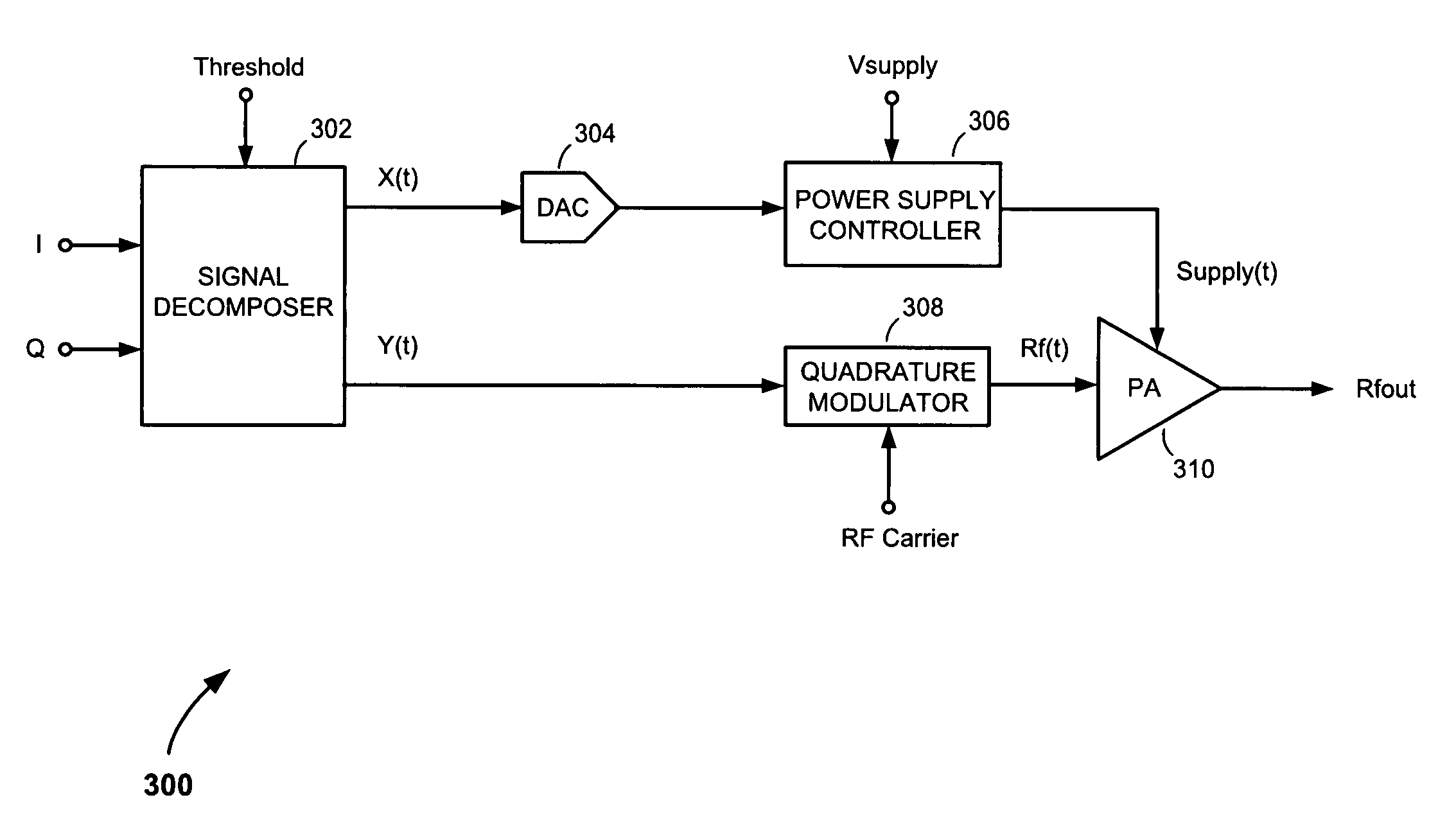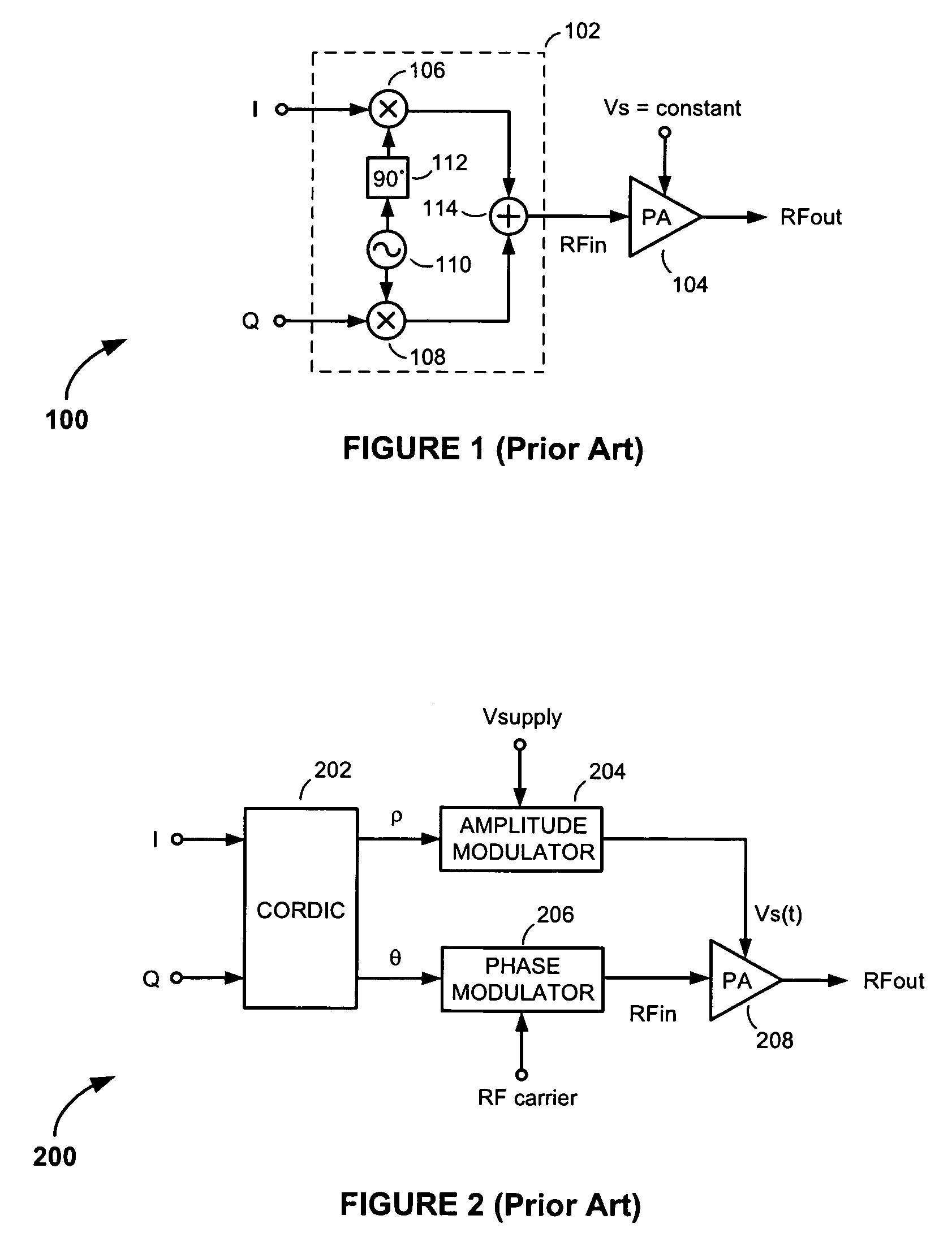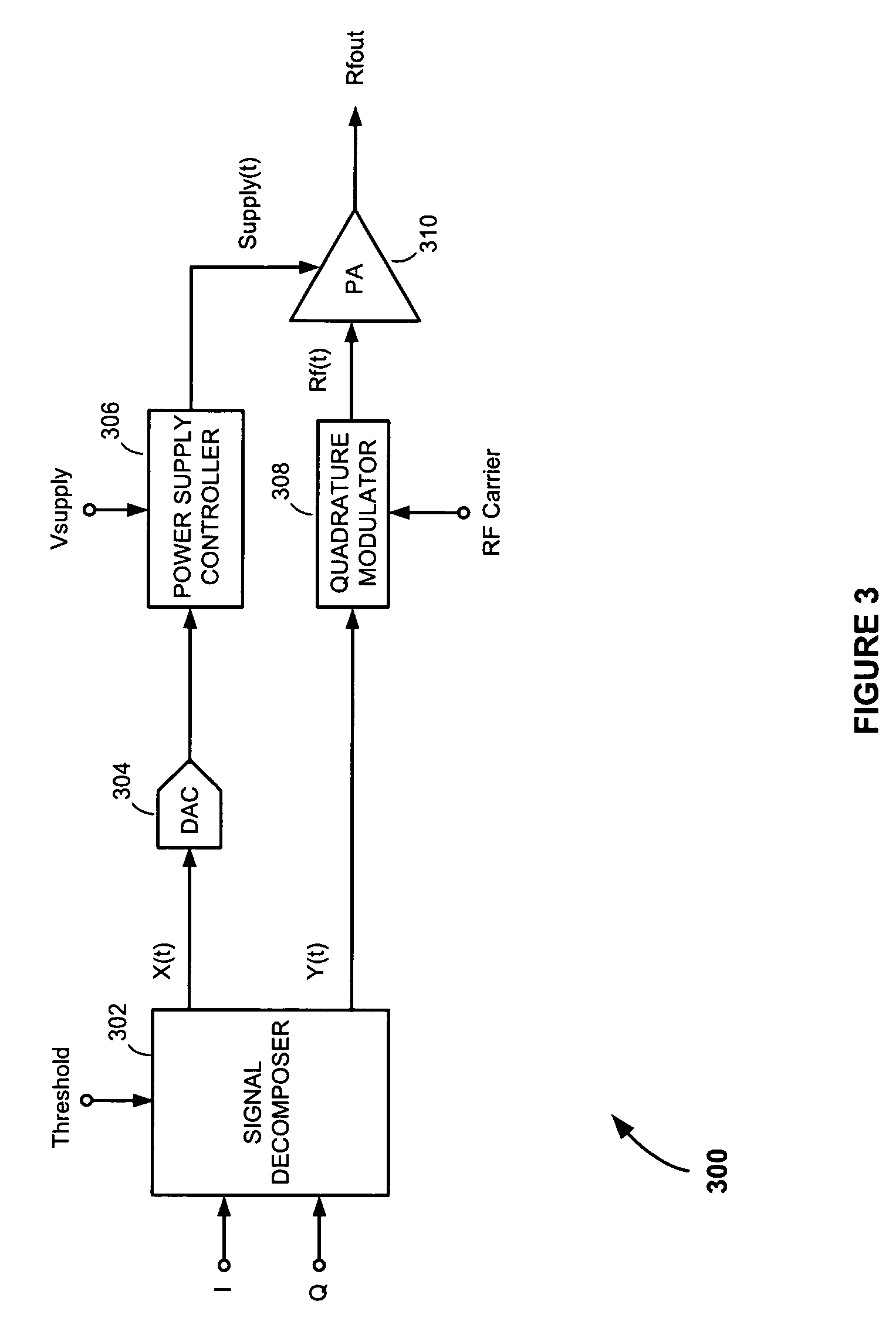Signal decomposition methods and apparatus for multi-mode transmitters
a multi-mode communication and decomposition method technology, applied in the field of signal decomposition methods and apparatus for multi-mode communication transmitters, can solve the problems of lack of power efficiency, linear pas configured to operate at reduced drive levels, and not very power efficient, so as to reduce the bandwidth of power supply signals, reduce signal bandwidths, and ease the effect of design requirements
- Summary
- Abstract
- Description
- Claims
- Application Information
AI Technical Summary
Benefits of technology
Problems solved by technology
Method used
Image
Examples
Embodiment Construction
[0028]Referring to FIG. 3, there is shown a multi-mode communications transmitter 300, according to an embodiment of the present invention. The multi-mode communications transmitter 300 comprises a signal decomposer 302; a first modulation path including a digital-to-analog converter (DAC) 304 and power supply controller 306; a second modulation path including a quadrature modulator 308; and a power amplifier (PA) 310.
[0029]The signal decomposer 302 operates to convert in-phase (I) and quadrature phase (Q) digital baseband signals to polar-coordinate digital amplitude and phase component signals Am(t)=√{square root over (I2+Q2)} and Pm(t)=tan−1(Q / I), which the signal decomposer 302 then decomposes into first and second digital modulation signals X(t) and Y(t) for the first and second modulation paths. As explained below, the decomposition of the amplitude and phase component signals Am(t) and Pm(t) involves distributing the amplitude information represented in the amplitude componen...
PUM
 Login to View More
Login to View More Abstract
Description
Claims
Application Information
 Login to View More
Login to View More - R&D
- Intellectual Property
- Life Sciences
- Materials
- Tech Scout
- Unparalleled Data Quality
- Higher Quality Content
- 60% Fewer Hallucinations
Browse by: Latest US Patents, China's latest patents, Technical Efficacy Thesaurus, Application Domain, Technology Topic, Popular Technical Reports.
© 2025 PatSnap. All rights reserved.Legal|Privacy policy|Modern Slavery Act Transparency Statement|Sitemap|About US| Contact US: help@patsnap.com



